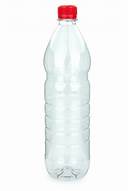What is a PET Plastic Bottle?
PET plastic bottles are a common type of plastic container used for packaging beverages, food, and other household products. They are lightweight, durable, and recyclable, making them a popular choice for manufacturers and consumers alike. But what exactly is a PET plastic bottle, and how is it made?

History of PET Plastic Bottles
Polyethylene terephthalate (PET) is a type of plastic that was first developed in the 1940s. It quickly became a popular material for making fibers, films, and containers because of its strength, clarity, and recyclability. In the 1970s, PET bottles began to be used for packaging carbonated beverages, and they quickly became the standard for this type of packaging.
How PET Plastic Bottles Are Made
PET plastic bottles are made using a process called blow molding. In this process, molten PET is injected into a mold, which is then cooled and hardened. The resulting bottle is strong and lightweight, and it can be easily recycled.
Advantages of PET Plastic Bottles
PET plastic bottles offer a number of advantages over other types of packaging, including:
- Lightweight: PET plastic bottles are very lightweight, which makes them easy to transport and handle.
- Durable: PET plastic bottles are strong and durable, which makes them resistant to breakage.
- Clear: PET plastic bottles are clear, which allows consumers to see the product inside.
- Recyclable: PET plastic bottles are recyclable, which helps to reduce waste and conserve resources.
Disadvantages of PET Plastic Bottles
PET plastic bottles also have some disadvantages, including:
- Cost: PET plastic bottles are more expensive to produce than some other types of packaging.
- Environmental impact: The production of PET plastic bottles can have a negative impact on the environment, as it requires the use of fossil fuels and can generate greenhouse gases.
Conclusion
PET plastic bottles are a common type of plastic container used for packaging beverages, food, and other household products. They are lightweight, durable, and recyclable, making them a popular choice for manufacturers and consumers alike. However, PET plastic bottles also have some disadvantages, including their cost and environmental impact.
Declaration: All article resources on this website, unless otherwise specified or labeled, are collected from online resources. If the content on this website infringes on the legitimate rights and interests of the original author, you can contact this website to delete it.






